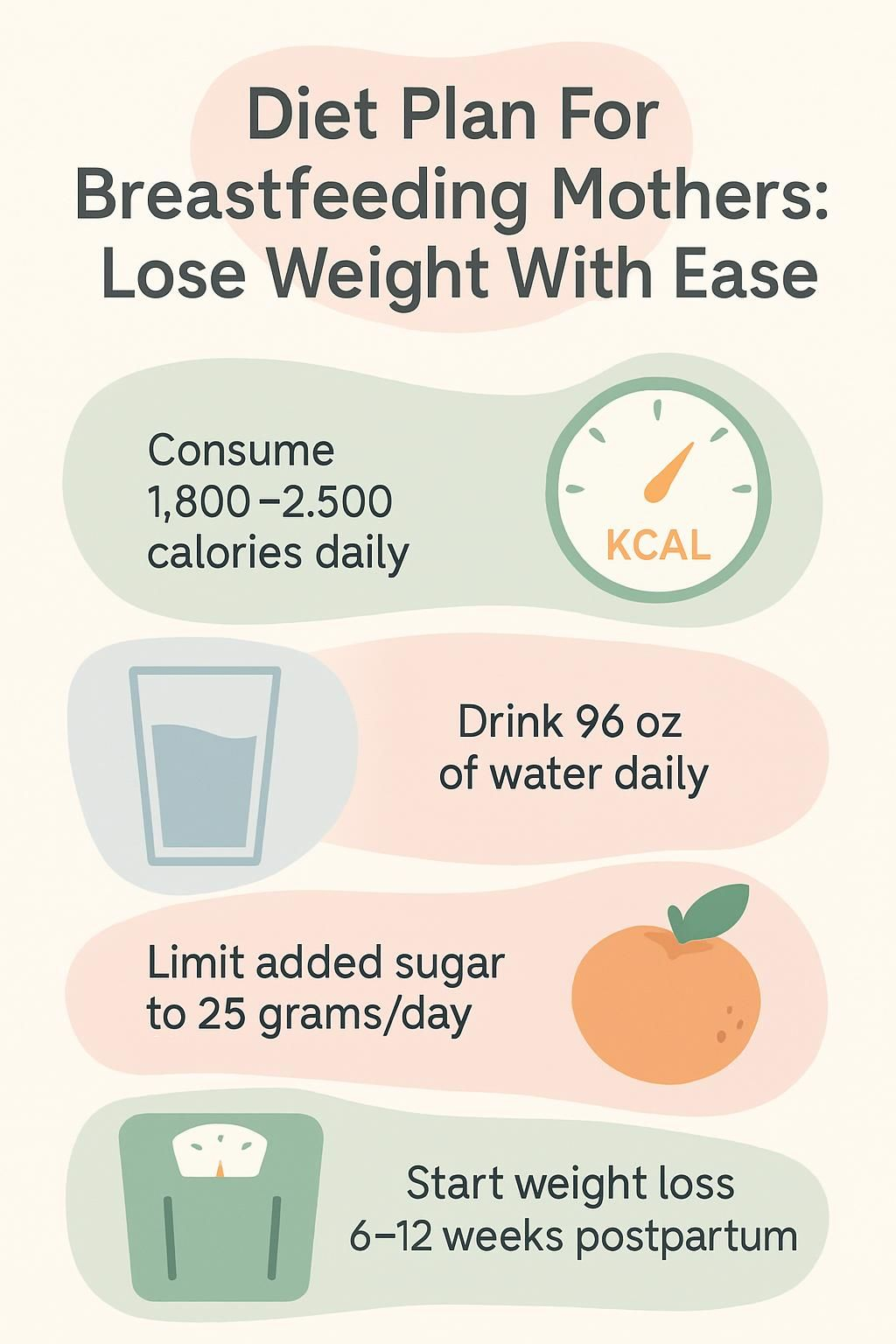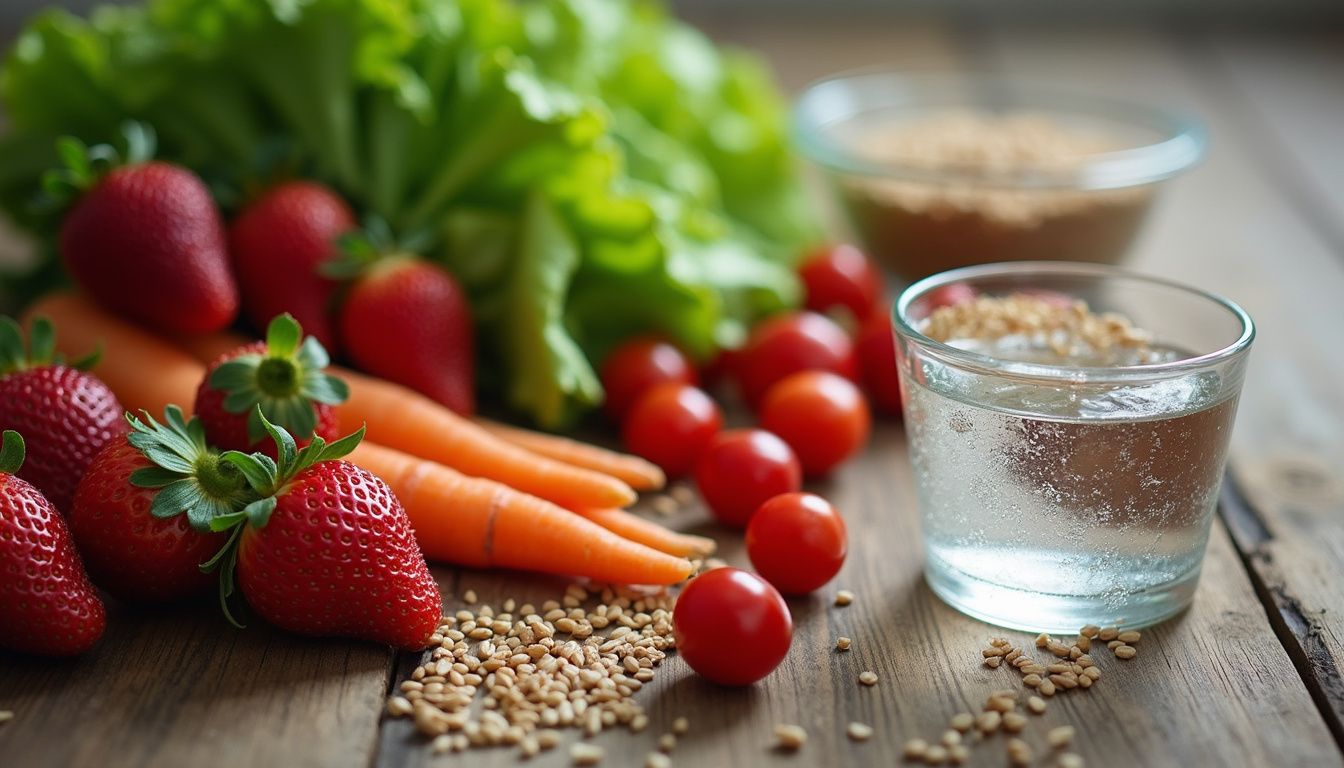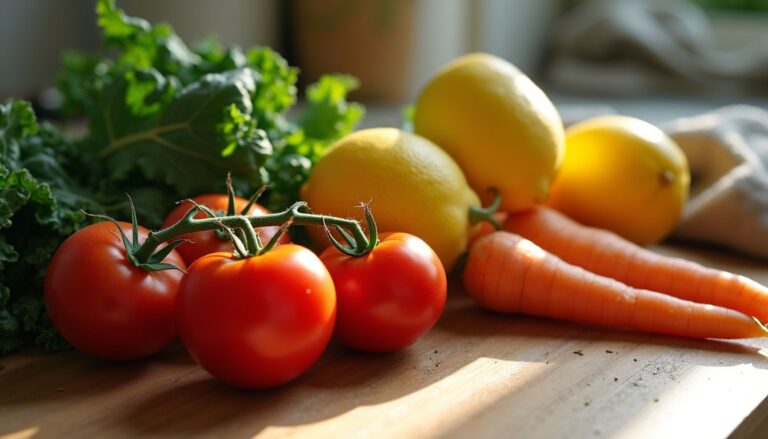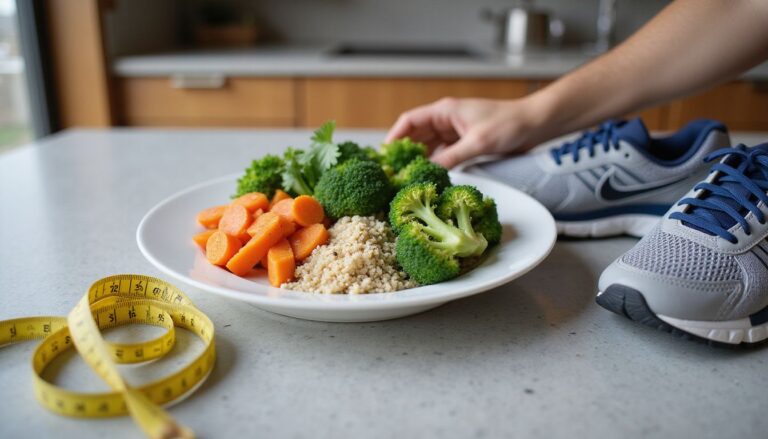Diet Plan For Breastfeeding Mothers: Lose Weight With Ease
Our Nutrition Assistant AI Suite will transform your body. You will lose fat, get toned, and build muscle. Gain confidence and optimal health.
Losing weight while nursing can feel tricky. You need energy for long days, yet you also want a safe, steady plan. A thoughtful breastfeeding diet can help you reach a healthy weight without harming your milk supply.
This guide walks you through a clear meal plan for breastfeeding that favors whole foods and practical habits. You will learn what to eat, how many calories you may need, and how to pace weight loss. Small changes add up, and they support both you and your baby.
Key Takeaways
- Most breastfeeding mothers need 1,800 to 2,500 calories per day. That includes about 450 to 500 extra calories to support milk production and gradual weight loss of about 1 pound per week.
- Build meals around nutrient-dense foods, for example lean protein, whole grains, fruits, vegetables, and healthy fats like avocado or nuts. Aim for about 96 ounces of fluids daily.
- Limit highly processed foods and sugary drinks. Try to keep added sugar under 25 grams per day, per American Heart Association guidance.
- Begin weight loss efforts around six to twelve weeks postpartum, after your clinician clears you for activity. Choose moderate exercise and a balanced diet.
- Supplements are rarely needed. If you take anything beyond a prenatal vitamin, talk with your healthcare provider first.

Why Is a Balanced Diet Important While Breastfeeding?

Your body works hard to make milk. Research estimates you need about 450 to 500 extra calories each day compared with pre-pregnancy needs. That is why a balanced eating pattern matters so much while you lactate.
Nutrient-dense foods deliver more nutrition per bite. Whole grains, lean proteins, dairy or fortified alternatives, fruits, and vegetables support your health and your baby’s growth. Key nutrients now include calcium for bones, iron for energy, and vitamin D for immunity and bones.
Very low calorie diets can drain your energy and may reduce milk supply. They also raise your risk of nutrient gaps. Choosing healthy fats, such as avocado, nuts, seeds, and olive oil, helps you feel satisfied and supports infant brain development.
The quality of your diet directly affects how strong you feel as a mom and how well your baby grows.
Key Guidelines for a Healthy Breastfeeding Diet
A smart breastfeeding diet meets higher nutritional needs and still allows slow fat loss. Balanced meals and snacks keep blood sugar steady and help you feel satisfied.
What nutrient-dense foods should I focus on?
Center plates on lean protein and colorful plants. Rotisserie chicken, deli turkey, and legumes like black beans provide protein and iron. Hard-boiled eggs, Greek yogurt, and milk or fortified plant drinks offer protein, calcium, and zinc.
Load up on fiber-rich vegetables such as spinach, bell pepper, and pre-washed salad greens. Fruits like apples, oranges, and grapes make easy snacks and add vitamins and minerals. For steady energy, choose complex carbohydrates like sweet potatoes and oats.
Quick options help on busy days. Keep protein bars, plain protein powder, or single-serve yogurt on hand. Stir chia seeds or ground flax into a smoothie for omega-3 fats and fiber. Cheese sticks, almonds, and a small amount of dried fruit provide healthy fats and convenient energy.
Bottom line: aim for a mix of protein, healthy fat, whole grains, and produce at each meal and snack.
How can I limit processed foods and added sugars?
Skip fast food, chips, cookies, sugary breakfast cereals, and processed meats. Cut soda, energy drinks, and sweetened tea. These items add calories yet crowd out nutrients your body needs for milk.
Craving sweets? Try a square of very dark chocolate, a protein smoothie with berries, or fruit with nut butter. Tracking intake with Nutritionix, MyFitnessPal, or Lose It! can reveal where added sugar sneaks in and can help you meet your calorie target for weight loss while protecting milk supply.
Why is staying hydrated important while breastfeeding?
Fluids support milk production and help keep energy stable. Most breastfeeding moms do well with about 12 cups, or 96 ounces, of fluids daily. Thirst, headache, dizziness, or darker urine can signal that you need more water.
Drinking water before meals may help curb extra calories. That can support fat loss without affecting lactation. Extra fluids beyond thirst will not boost supply, but dehydration may lower it.
“I noticed my baby nursed better, and I felt more energetic, once I started tracking my water intake during breastfeeding.”
Understanding what to limit, such as alcohol and caffeine, is just as important as hydration.
Which substances should I avoid, such as alcohol and caffeine?
Keep caffeine modest, about one to two cups of coffee per day. More can pass into milk and may bother your baby’s sleep. If you drink alcohol, wait at least two to three hours after one standard drink before nursing. That timing helps the alcohol clear your system.
Limit artificial sweeteners like aspartame and sucralose if they trigger cravings or stomach upset. Avoid foods high in trans fat, including some fried and packaged foods. These can harm heart health and are not helpful in the postpartum period.
How Many Calories Do Breastfeeding Moms Need Daily?
Breastfeeding raises calorie needs. A common target is at least 1,800 calories per day while nursing. Many mothers need 250 to 500 calories above their baseline to support milk production and normal activity.
For example, if you ate around 2,000 calories before pregnancy, you might need 2,250 to 2,500 while exclusively breastfeeding. Needs may drop once your baby eats solids. The InfantRisk Calorie Calculator can personalize a goal using your age, weight, and activity level.
Aim for measured progress, about one pound per week. Slower loss protects energy, mood, and milk supply.
Best Foods to Include for Weight Loss While Breastfeeding
Choosing high-quality foods helps you stay full on fewer calories. These options also cover the vitamins and minerals needed for lactation.
Which lean proteins are best for breastfeeding moms?
Pick grilled chicken, deli turkey, rotisserie chicken, or hard-boiled eggs. These give protein with less saturated fat. Try to include protein two to three times each day to support fullness and muscle repair.
Plant proteins also fit well. Chickpeas, black beans, lentils, and tofu can anchor meals. After my first month postpartum, a salad with chickpeas or a bowl with chicken and greens kept me satisfied between feeds.
What whole grains support weight loss during breastfeeding?
Whole grains help control hunger and boost fiber intake. Choose whole grain toast, oatmeal, brown rice, quinoa, whole wheat pasta, and high-fiber cereal. These carbs release energy slowly, which steadies blood sugar and mood.
Swapping refined grains for whole grains is a simple move with big payoffs. Dietitians suggest making at least half of your grains whole to support a healthy gut.
How do healthy fats like avocado and nuts help?
Healthy fats help your body absorb vitamins A, D, E, and K. Avocado, nuts, seeds, and olive oil support heart and brain health and keep you satisfied.
Try 12 to 15 almonds as a snack or six walnut halves on a salad. These provide vitamin E and omega-3 fats to support your baby’s development. Healthy fats improve taste and satisfaction, which makes it easier to stick to your plan.
Why are fruits and vegetables important for breastfeeding moms?
Produce delivers vitamins, minerals, antioxidants, and fiber. Aim for at least three servings of vegetables, for example sweet potatoes, spinach, tomatoes, and mixed greens. Add two servings of fruit such as berries, apples, oranges, or grapes.
Portable fruit helps during hectic days. I began packing an apple and a small bag of grapes for car rides, which made it easier to skip soda or candy.
What dairy or plant-based alternatives are recommended?
Dairy foods and fortified plant alternatives are useful for calcium and protein. Greek yogurt, milk, and cheese sticks offer convenient choices. If you avoid dairy, pick fortified soy milk or almond milk with added calcium and vitamin D.
Plant-based yogurts made from soy or coconut can add variety. Vegan breastfeeding mothers need a reliable vitamin B12 source, usually a supplement, since plants do not provide enough of this nutrient.
Foods to Avoid While Nursing
Some foods add calories without nutrition or may cause digestive discomfort. Trimming these can support steady weight loss while you breastfeed.
Why should I avoid sugary drinks and snacks?
Sugary drinks, like soda or sweet tea, add many calories and few nutrients. Sweets such as candy, pastries, and syrups spike blood sugar, then leave you tired and craving more.
One 12 ounce soda has about 39 grams of added sugar, nearly 150 calories. The American Heart Association recommends less than 25 grams of added sugar per day for women. When I skipped sweet snacks during nursing, my energy felt steadier, and hunger pangs were less intense.
What are the risks of highly processed foods?
Fast food, chips, cookies, sugary cereals, processed meat, and packaged snacks often contain trans fats, extra sodium, and additives. These raise the risk of high blood pressure and heart disease and can make weight loss harder.
Such foods can displace nutrient-rich choices and leave you short on vitamins and minerals. Some people notice nausea or loose stools with many additives. Cutting back supports your health and protects your long-term goals.
Should I avoid excessive spicy or acidic foods while breastfeeding?
Most babies tolerate spicy or acidic foods well. You usually do not need to restrict chili, pepper, onions, or citrus while nursing. Flavors may change slightly in your milk, but that rarely causes issues.
True food allergies in infants are uncommon. If your baby shows symptoms such as blood or mucus in the stool, vomiting, or a rash after certain foods, talk with your healthcare provider. Last year I ate tomatoes and salsa often while breastfeeding and saw no changes in my baby’s sleep or digestion.
Sample 7-Day Diet Plan for Breastfeeding Moms
Use this sample as a starting point. Adjust portions to meet your calorie needs and appetite.
What does Day 1’s balanced meal plan look like?
Breakfast: Two scrambled eggs with spinach and tomatoes, one slice whole grain toast, and an apple or berries. Coffee or tea if desired. About 350 calories.
Snack 1: Half cup Greek yogurt with one tablespoon chia seeds and six walnut halves. Around 200 calories.
Lunch: Three ounces grilled chicken or half cup tofu on a large mixed salad with a whole grain roll or quinoa. About 400 calories.
Snack 2: One boiled egg or two tablespoons hummus with carrot or cucumber sticks. About 150 calories.
Dinner: Three ounces baked salmon, roasted vegetables, half cup brown rice or quinoa, side salad. About 450 calories.
Evening: One ounce dark chocolate, at least 70 percent cocoa, with fruit. About 150 calories.
What are high-iron and fiber-rich meal ideas for Day 2?
Breakfast: Oatmeal with sliced almonds and raisins. Iron-rich and filling.
Snack: Apple with peanut butter or carrots with hummus.
Lunch: Lentil stew, about 6 milligrams iron per cup, plus a small salad.
Dinner: Half plate sautéed spinach with brown rice or quinoa and roasted chickpeas. Aim for 25 to 30 grams of fiber per day from beans, whole grains, and vegetables.
Which plant-based and whole grain meals fit Day 3?
Breakfast: Scrambled tofu made from half a block with whole grain toast. Protein and iron support milk production.
Lunch: Chickpea salad with tomatoes, cucumbers, baby spinach, olive oil, lemon juice, and herbs. Serve with quinoa.
Dinner: Vegetable stir-fry over brown rice. If you want something sweet, try warm oats with almond butter as a balanced dessert.
How can I focus on calcium and healthy fats on Day 4?
Breakfast: Greek yogurt topped with sliced nuts for calcium and healthy fat.
Snacks: Cheese sticks or fortified soy yogurt for protein and calcium.
Lunch: Salad with avocado and olive oil. Add grilled chicken or beans.
Dinner: Whole grain pasta with vegetables and a drizzle of olive oil. Pair with a glass of fortified almond milk if you avoid dairy.
What iron-rich, calorie-dense foods are included on Day 5?
Protein picks: Deli turkey and rotisserie chicken have easily absorbed iron. A three ounce portion provides around 1 milligram. One large egg adds about 0.9 milligrams of iron.
Smart carbs: A medium baked sweet potato offers vitamin C and potassium. One cup cooked quinoa gives about 2.8 milligrams of iron and complete protein.
These choices are simple to prep and filling on busy days.
How do I add variety with meals and snacks on Day 6?
Rotate proteins and sides to keep meals interesting. Try grilled fish at lunch and tofu stir-fry at dinner. Build big salads with different vegetables, grains, and a lean protein.
Snack ideas include roasted chickpeas, veggie sticks with hummus, air-popped popcorn, or a small handful of nuts. These offer fiber, crunch, and staying power with little added sugar.
What nutrient-dense comfort foods can I eat on Day 7?
Baked salmon brings omega-3s and protein. Sweet potatoes offer slow-digesting carbs and vitamin A for eye and immune health.
Keep a small treat, like dark chocolate, for pleasure and minerals such as magnesium. A mini smoothie with Greek yogurt, berries, and nut butter can calm cravings and deliver protein. Energy bites made from oats, nuts, and a bit of dried fruit make a handy on-the-go option.
Tips for Losing Weight Safely While Breastfeeding
Safe weight loss focuses on small habits that you can repeat. These steps protect your milk supply and your mental health.
How does frequent breastfeeding help burn calories?
Milk production uses energy. Many mothers burn 250 to 500 calories per day through lactation. Nursing more often can increase energy use.
During my own postpartum months, breastfeeding on demand allowed slow weight loss while I ate balanced meals. The hormone prolactin supports milk production and may boost your metabolism during feeds.
Why should I eat smaller, frequent meals throughout the day?
Three meals and two snacks can help prevent energy dips. Regular eating supports steady blood sugar and lessens the urge to overeat later.
This pattern also makes it easier to include protein, produce, and whole grains throughout the day. Many parents find this easier to manage than large meals when caring for a newborn.
What happens if I skip meals while breastfeeding?
Skipping meals can reduce milk supply and make you feel tired. Your body needs consistent fuel while nursing. Going long stretches without food may lead to cravings for sugary snacks and lower diet quality.
After I tried to skip breakfast, I felt drained by noon and noticed my patience was low. Eating on a schedule kept my energy steady and supported better feeding sessions.
What types of light to moderate exercise are safe?
After your clinician clears you, start with low-impact options. Walking, gentle yoga, and easy cycling are common choices. Many parents aim for about 10,000 steps per day, with at least 3,500 at a moderate pace.
Swimming and light stretching can also help you rebuild strength. Avoid high-impact moves until you feel ready. Stop any activity that causes pain or unusual bleeding, and seek medical advice if concerns arise.
How Does Hydration Affect Milk Production and Weight Loss?
Water supports milk volume and helps your metabolism run well. A daily goal of about 12 cups, 96 ounces, suits many breastfeeding moms. Low fluid intake can bring headaches, fatigue, or dizziness, and it may drop your supply.
On days I kept a water bottle nearby, my energy felt better and feedings were smoother. Hydration also helps your body use nutrients from food. Limiting sugary drinks can prevent energy crashes and supports weight loss goals.
When Is the Best Time to Start Losing Weight After Birth?
Most healthcare providers suggest waiting six to twelve weeks after delivery to start focused weight loss. This window allows your body to heal and milk supply to stabilize. Always get medical clearance before new exercise or major diet changes.
Target gradual loss, about one to two pounds per week. Crash diets and severe calorie cuts may harm mood, energy, and supply. Gentle walks are a good start, then progress as you feel stronger. Ask your clinician before using any weight loss medications because many enter breast milk.
Summary: Begin after 6 to 12 weeks with clinician approval. Choose steady fat loss, balanced meals, and sufficient fluids.
Can I Use Supplements or Weight Loss Pills While Breastfeeding?
Weight loss medications are generally not compatible with breastfeeding. Many drugs pass into milk and may affect infant appetite or growth. Injectable GLP-1 drugs, such as semaglutide and tirzepatide, lack strong safety data in lactation.
Herbal or stimulant supplements can harm supply or irritate your baby. If you need extra nutrients, a quality prenatal vitamin usually covers the basics. After my pregnancy, my doctor advised against weight loss pills and guided me to focus on food, sleep, and gentle exercise instead. Always consult your healthcare provider before starting any supplement.
What Should Vegetarian and Vegan Breastfeeding Moms Consider?
Include a range of plant proteins, for example tofu, tempeh, chickpeas, lentils, nuts, and seeds. Add whole grains and leafy greens for iron, and choose fortified plant milks for calcium and vitamin D.
Vegan mothers need a trusted vitamin B12 source since plants do not supply enough. Some may also need iodine, iron, and choline. Simple snacks like mixed nuts, edamame, or bean dips make it easier to meet protein goals on busy days.
Ask your clinician about checking blood levels for iron, vitamin D, and B12 during lactation. Smart planning prevents fatigue from nutrient gaps and helps you lose weight while breastfeeding at a healthy pace.
What Are Common Myths About Dieting While Breastfeeding?
Myth 1: Any diet ruins milk quality. In reality, breast milk stays quite stable unless you face severe malnutrition.
Myth 2: Drinking extra water sky-rockets supply. Evidence shows drinking beyond thirst does not increase milk. Meeting normal fluid needs is enough.
Myth 3: You must avoid spicy or gas-producing foods. Most babies tolerate these well. Restrict only if you see clear symptoms in your infant and a clinician advises changes.
Myth 4: Cleanses, meal skipping, or quick-fix pills are fine postpartum. These can harm energy, mood, and supply. A balanced meal plan with whole foods works better and is safer.
FAQs About Diet and Weight Loss During Breastfeeding
This section covers common concerns that come up during the postpartum period.
Will dieting reduce my milk supply?
Severe calorie restriction, for example dipping under 1,800 calories per day, can lower supply. Your body needs steady fuel and fluids to make milk. A moderate calorie reduction paired with nutrient-dense foods supports slow weight loss and healthy production.
I noticed my supply dipped on days I skipped meals. Adding whole grains, lean protein, and nuts brought it back up within a day or two.
Can I fast while breastfeeding?
Fasting is not recommended because it can reduce calories and minerals needed for milk and recovery. Long gaps without food may leave you fatigued and stressed and can lower milk volume.
Regular meals and snacks are a better plan. This keeps your energy stable and supports your baby’s needs.
How does exercise impact milk production?
Low to moderate exercise is safe once a clinician clears you. When you meet calorie and hydration needs, exercise does not reduce milk volume or quality. Many people feel less stressed and more energetic with gentle daily movement.
How Can a Registered Dietitian Help Create a Personalized Plan?
A registered dietitian can tailor a plan to your needs, food preferences, and health concerns. If your baby shows possible food reactions, the dietitian can guide a short elimination trial and track symptoms over several weeks.
Many insurance plans cover nutrition visits. A dietitian can help you build satisfying plates, manage cravings, and set realistic goals. Working with one taught me how to use dairy alternatives and plant proteins without missing key nutrients.
Conclusion
A thoughtful breastfeeding diet helps you lose weight safely while nourishing your baby. Choose whole foods, lean protein, fruits, vegetables, whole grains, and healthy fats. Drink enough water, eat regular meals, and keep snacks simple and nutrient dense.
Seek medical advice for personalized guidance and before starting any supplement or medication. For credible nutrition guidance, professional groups such as the American College of Obstetricians and Gynecologists and the Academy of Nutrition and Dietetics offer helpful recommendations. This article is educational and is not medical advice.
Small daily steps will carry you forward. With patience and a clear plan, you can support milk production, protect your energy, and reach a healthy weight.
FAQs
1. What nutrients are most important in a diet plan for breastfeeding mothers who want to lose weight?
Breastfeeding mothers need a balanced diet that includes protein, vitamins, and minerals. Foods rich in calcium, iron, and zinc support both mother and baby. Nuts, fruits, and vegetables provide essential nutrients and help maintain energy levels. Research shows that a diet high in these nutrients supports healthy weight loss without harming milk supply (Institute of Medicine, 2005).
2. Can breastfeeding mothers drink alcohol while following a diet plan?
Alcohol is not recommended for breastfeeding mothers. Studies show that alcohol can pass into breast milk and may affect infant development. If alcohol is consumed, experts advise waiting at least two hours before nursing to reduce exposure (American Academy of Pediatrics, 2012).
3. How does stress impact weight loss during breastfeeding?
Stress can slow weight loss by increasing the hormone cortisol, which affects appetite and metabolism. Chronic stress may also lead to symptoms like anorexia or overeating. Managing stress through rest, support from family, and regular meals helps maintain both mental health and steady weight loss.
4. Are nuts safe and beneficial for breastfeeding mothers trying to lose weight?
Nuts are safe and nutritious for most breastfeeding women unless there is an allergy. They are rich in protein and minerals such as magnesium and zinc. Eating nuts as part of a balanced diet helps control hunger while providing key nutrients needed during lactation.
Summary: A well-planned diet with the right balance of protein, vitamins, minerals, fruits, and nuts supports safe weight loss for breastfeeding mothers. Avoiding alcohol and managing stress are important steps backed by research to protect both mother’s health and baby’s growth.







